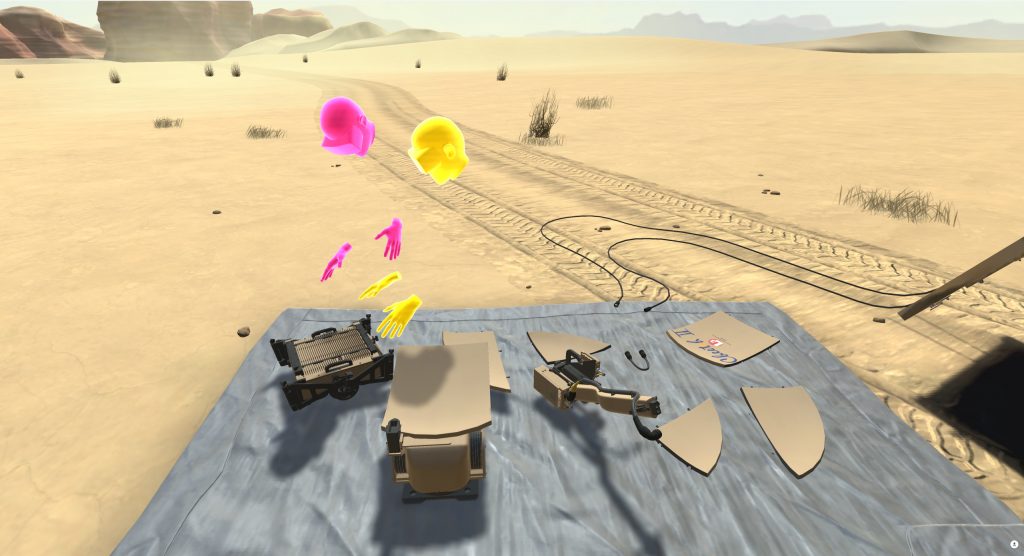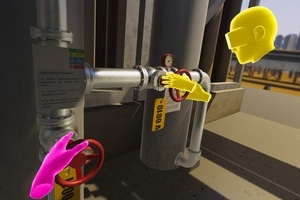Evidence is building that virtual reality (VR) has the potential to supercharge corporate training, says Justin Parry, co-founder and COO of Immerse.
According to a recent PwC study, training employees with VR is significantly faster and cheaper than classroom methods. Plus, workers are 340% more confident in their new skills, and feel four times as emotionally connected to the content.
As enterprise VR becomes more flexible, more scalable, and more affordable, it is becoming available to a wider range of businesses. And in a world of increasingly disparate workforces, technology that enables effective remote-learning is even more valuable.
With the business case for enterprise VR continuing to strengthen, what do companies need to weigh up if they are considering incorporating virtual reality into their training technology mix?
Platform selection and content creation
Flexibility is crucial for an effective VR content programme; training needs to be able to change and evolve with your business. It’s impossible to know what innovations lie ahead, so it doesn’t make sense to get locked in to one provider.
An effective programme also requires consistency, however, both in terms of content creation and developing a training framework for your content providers to work with. Content must also be easy to integrate, scale and deploy and then measure, ensuring a good return on investment.
When you’re thinking about content capabilities, consider whether you are starting from scratch with a VR training programme or if you already have powerful VR content that you want to continue using. Even if you need a VR content supplier now, you may plan to build out your own internal VR training capabilities further down the line.
Either way, it’s sensible to think about an enterprise VR platform that enables existing content to be imported with ease, but also provides the tools you need to create new content, such as toolkits and interaction libraries.
When you’re designing content, think about how your employees learn best, and what makes sense for your organisation and the training objectives. Good VR training is agile, accessible and can be tailored to learners’ needs.

Training can be delivered in bitesize chunks, trainees can receive instant feedback, and learner-specific personalisation can make the programme minutely tailored to individual employees, for instance. Also think about playback and evaluation options; content can be built so that it can be recorded, so that trainers can assess user performance via a fully immersive session recording.
Hardware choices
Different headsets and equipment serve different purposes. If supportability and scalability are at the forefront of what you want to achieve, ensuring that your enterprise VR platform works with as many different hardware options as possible is key.
If your platform is compatible with standalone devices like the Oculus Quest, it is likely to make it easier and more affordable to roll out VR training to a large number of employees. But there are of course security and accessibility considerations that need to be taken into account with corporate use of standalone headsets.
For enterprise particularly in industries where data protection is high-priority the demand for ease-of-access needs to be balanced with maintaining security. When thinking through this balancing act, businesses should consider the user flow: how will employees log in to the VR training programme will there be a pin, or another method? Will the VEP be integrated with other enterprise or learning management systems? How will different users be identified and differentiated? What happens to the data that’s captured? How will trainers assess the training?
A VR platform that integrates with standalone headsets and can support a good user flow that is both seamless and secure is a game-changer, opening up the world of VR training to many more businesses and many more employees.
Data is king
The ability to capture huge amounts of data and use it to build rich pictures of training sessions and trainee performance is a key benefit of VR training. As your business considers exploring enterprise VR, you’ll need to think carefully about what data you want to capture, how you will process that data, and how you will then act on those data insights.

A good VR training platform can track user movements, comments, speed, errors and more, feeding thousands of data points into a dashboard.
This data not only allows trainers to develop an intricate picture of employee development, but provides valuable feedback on both the efficiency of training programmes themselves and wider business procedures, measuring ROI and highlighting areas for improvement. Used effectively and proactively, this data can be hugely powerful. Companies can expect to benefit from better-trained employees, higher levels of employee engagement, and a slicker business.
Embracing enterprise VR
We’re at a watershed moment for enterprise VR, as platforms become more flexible, user flows become smoother, hardware becomes more affordable and data becomes even more detailed. And as companies seek effective remote-working and remote-learning tools in the wake of the COVID-19 crisis, the move towards enterprise VR is accelerating.
Businesses exploring the potential of VR should consider an enterprise VR platform that can be integrated seamlessly with existing systems, offer content and hardware flexibility, and provide a level of data capture that will really revolutionise not just their training, but their entire business.
The author is Justin Parry, co-founder and COO of Immerse.
Comment on this article below or via Twitter: @IoTNow_OR @jcIoTnow










